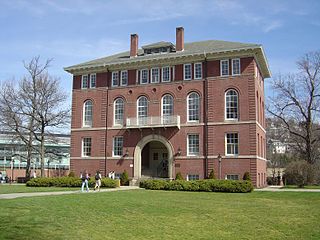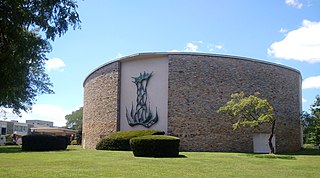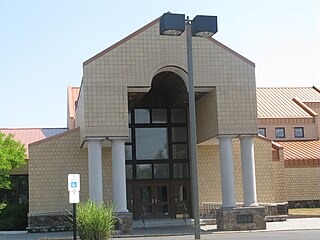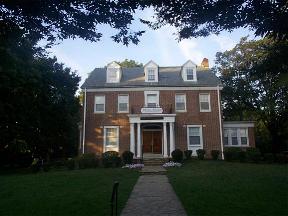
Joseph Evans Sperry (1854–1930) was an American architect, noted for designing buildings in Baltimore. He was born in Georgetown, South Carolina and later relocated to Baltimore, Maryland, where he partnered with James Bosley Noel Wyatt to form the architectural firm Wyatt and Sperry. Their affiliation lasted from 1878 to 1887. The two probably became acquainted while working in the office of Architect, E. Francis Baldwin, where he worked from 1872 until 1876. With Wyatt, he designed a number of buildings around Baltimore before breaking off on his own. Sperry became one of Baltimore's leading architects, designing many public buildings, including churches, hospitals, and banks. In 1914 he was named a Fellow of the American Institute of Architects. Sperry also designed several buildings at Johns Hopkins University and one building at West Virginia University. Sperry's most famous building is probably the Emerson "Bromo-Seltzer" Tower in Baltimore. Sperry's buildings were designed in a variety of styles, but overall were eclectic. Sperry practiced architecture independently from 1888 until he died in 1930.

Bolton Hill is a neighborhood in Baltimore, Maryland, with 20 blocks of mostly preserved buildings from the late 19th century. It is listed on the National Register of Historic Places, preserved as a Baltimore City Historic District, and included within the boundaries of Baltimore National Heritage Area. The neighborhood is bounded by North Avenue, Mount Royal Avenue, Cathedral Street, Dolphin Street, and Eutaw Place. Bolton Hill is a largely residential neighborhood with three-story row houses with red brick, white marble steps, and high ceilings. There are also larger more ornate originally single-family houses, many houses of worship, parks, monuments, and a few large apartment buildings. Many significant residents have lived in the neighborhood, including F. Scott Fitzgerald, Woodrow Wilson, the Cone sisters, and Florence Rena Sabin.

Chizuk Amuno Congregation is a large Jewish house of worship affiliated with Conservative Judaism. It is located in Pikesville, Maryland. The congregation's name comes from the Hebrew "Chizzuq 'Emunah", meaning "strengthening the faith". The word "Amuno" is a variant of the Ashkenazi Hebrew pronunciation of "'Emunah".

Reservoir Hill, also known as Whitelock, is a neighborhood in the city of Baltimore, Maryland, United States. It is located south of Druid Hill Park, north of Bolton Hill, east of Penn-North, and west of Jones Falls. It is bounded by Druid Park Lake Drive, the Jones Falls Expressway, North Avenue, and McCulloh Street. It is contained in the 21217 ZIP code.

Moorish Revival or Neo-Moorish is one of the exotic revival architectural styles that were adopted by architects of Europe and the Americas in the wake of the Romanticist fascination with all things oriental. It reached the height of its popularity after the mid-19th century, part of a widening vocabulary of articulated decorative ornament drawn from historical sources beyond familiar classical and Gothic modes. Neo-Moorish architecture drew on elements from classic Moorish architecture and, as a result from the wider Islamic architecture.

Alois Kaiser was an American chazzan and composer, considered to be the founder of American cantorate.

William Rosenau was a leader of Reform Judaism in the beginning of the twentieth century in the United States.

Eutaw Street is a major street in Baltimore, Maryland, mostly within the downtown area. Outside of downtown, it is mostly known as Eutaw Place.
Prince Street Synagogue, in the Springfield/Belmont neighborhood, is the oldest synagogue building still standing in Newark, Essex County, New Jersey, United States.

Baltimore Hebrew Congregation Synagogue, now known as Berea Temple Seventh Day Adventist Church, is a historic synagogue building located in the Madison Park neighborhood of Baltimore, Maryland, United States. The former synagogue, built as an early home of the Baltimore Hebrew Congregation, is built of ashlar gray granite from Port Deposit, Maryland. It is a well-executed, 19th century version of a Byzantine church, designed by Charles L. Carson, a Baltimore architect. It features a large central dome, 40 feet in diameter, resting on a high octagonal drum pierced by rectangular windows of stained glass and two tall octagonal towers flanking the main entrance.
Oheb Shalom is a Conservative synagogue in South Orange, New Jersey.
Oheb Sholom is a Reform synagogue located in Goldsboro, North Carolina. It is one of fewer than a hundred nineteenth-century synagogues still standing in the United States, and the second oldest synagogue building in the state.
Temple Oheb Shalom is a Reform synagogue in Baltimore, Maryland. The highest point in the city is located in its parking lot.

Beth Shalom Congregation is a Conservative synagogue in Columbia, Maryland. It is the only Conservative congregation in Howard County, Maryland.
Charles L. Carson, was an architect born in Baltimore, the oldest son of Daniel Carson, a builder, and one of the founders of the Baltimore chapter of AIA. Carson had little formal training as an architect. Around 1870 he partnered with Thomas Dixon (architect) while taking drawing lessons at the Maryland Institute College of Art. Carson and Dixon worked from their offices at 117 Baltimore Street as Thomas Dixon and Charles L. Carson until sometime before 1877 when the partnership was dissolved. In 1888 he hired Joseph Evans Sperry who became his chief assistant, and later his partner and successor.

Congregation M'kor Shalom is a Reform Jewish synagogue located at 850 Evesham Road in Cherry Hill, New Jersey.

Few Jews arrived in Baltimore, Maryland, in its early years. As an immigrant port of entry and border town between North and South and as a manufacturing center in its own right, Baltimore has been well-positioned to reflect developments in American Jewish life. Yet, the Jewish community of Baltimore has maintained its own distinctive character as well.












